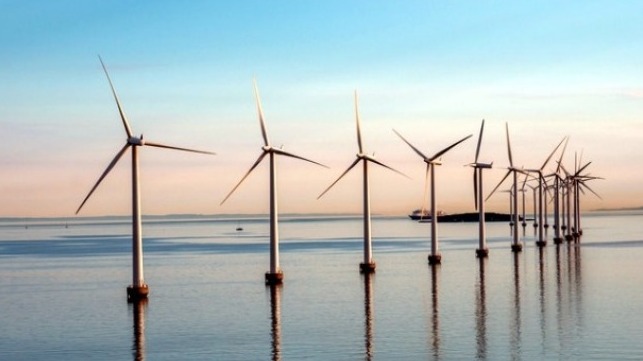Allianz Highlights Need to Manage Emerging Risks in Offshore Wind

The rapid buildout of the offshore wind sector, which includes the introduction of new technologies and moving into more exposed and distant locations, is giving rise to increased risks. In a new report on the growth of the offshore wind power sector, Allianz Commercial warns that the industry’s developers and their insurers need to manage a range of risks to successfully scale offshore wind globally.
“The scale and scope of the global offshore wind roll-out is epic,” says Adam Reed, Global Leader Offshore Renewables and Upstream Energy, Allianz Commercial. “It requires the expansion of manufacturing footprint, port facilities, and infrastructure, and it needs to be fast-tracked by all stakeholders in a joint effort – financial institutions, corporates, and governments.”
The report highlights that while 99 percent of the total installed global offshore wind capacity is in Europe and Asia-Pacific, investment in the sector is growing rapidly around the world. China, they note, has overtaken Europe as the world’s biggest market, with half of the world’s offshore wind installation in 2023 planned for China, while the United States is just beginning to invest heavily in the sector.
“While growth ambitions are huge, all is not plain sailing for developers,” according to the report. They highlight the much-discussed issues including spiraling costs due to the impact of inflation, capital expenses, rising interest rates, and geopolitical instability that have halted major wind projects. The cost of materials and vessel hire they note have risen especially with the high demand for installation ships, while the supply of materials and access to contractors remains challenging. Supply chain bottlenecks, lengthy permitting procedures, and delays to grid connections are also exerting pressure.
“Offshore wind farms are highly complex projects,” says Anthony Vassallo, Global Head of Natural Resources, Allianz Commercial. “The lessons learned from past losses – which are primarily damage to cables and turbines – are essential for the industry to continue to grow sustainably. Emerging risks need to be explored, too, as developers prepare for widescale deployment of offshore wind around the globe.”
Analyzing the German and Central Eastern Europe market, Allianz Commercial reports that 53 percent of offshore wind claims by value from 2014 to 2020 relate to cable damage. From the loss of entire cables during transport to the bending of cables during installation, cable losses have incurred multi-million-dollar losses in offshore wind. The second major cause of claims (20 percent) was turbine failure.
Allianz however warns going forward the industry needs to manage the deployment of emerging technologies which create the greatest risks, compounded by the speed at which the industry is advancing. They note in the last 20 years the size of turbines has increased dramatically with for example a nearly quadrupling in height. Rotor diameters have also increased fivefold in the past 30 years.
Turbines they note are now moving further from shore in territories prone to different types of weather conditions and natural catastrophes. They point to the higher wind speeds and wave action on the U.S. East Coast or offshore Taiwan, as well as the exposure to typhoons in China.
“With new technological approaches and an increase in turbine size comes a corresponding increase in risk. We are closely monitoring the many innovations in the offshore wind industry which include prototypical technologies, pilot projects, and evolving standardization,” says Dr. Wei Zhang, Senior Risk Consultant, Natural Resources, Allianz Commercial.
The report also highlights an uptick in incidents of vessel collision with turbines and offshore infrastructure that can also result in significant losses. Allianz reports to date these have typically involved smaller vessels, often as a result of human error, while noting that there have also been several incidents involving larger vessels. They call this an increasing concern citing the fact that 2,500 wind turbines are due to be installed in the North Sea before 2030.
Allianz concludes that while the potential of offshore wind as a viable source of clean power for the energy transition is indisputable, there is a need to manage risks as the industry rapidly expands. Despite its invaluable contribution to the net-zero transition, they write that the offshore wind industry needs to be mindful of responsible development and environmental stewardship.
The full report, “A Turning Point for Offshore Wind,” is available online discussing the growth opportunities, tech innovations, risk trends, and loss patterns for the global industry.
